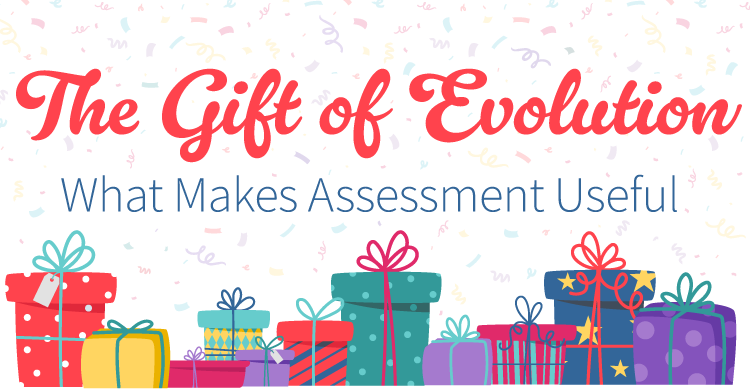Accurate assessment design can effectively leverage our ability to deeply understand a student’s next steps in their learning. As we gather evidence about what students know and can do, we can utilize that information to better determine what a student does know as well as which areas are still difficult for them to master. Yet talking about and planning for assessment design can be a challenging endeavor, especially when this kind of work was never part of our schooling or training.
Many of us are familiar with assessments as they were done unto us; pre-packaged assessments from curricula that offer loose connections to standards and their intended level of rigor; state, provincial, or district-level assessments that are written with only multiple-choice questions—due to the manner in which those results can be processed and scored; national exams that are time-bound and do not allow all students to fully demonstrate what they are truly capable of and what they can do with what they know. Our frustrations over the years have instilled a desire in each of us to do something better—something richer—for our students so that our use of assessment builds a spirit of hope, efficacy, and achievement for students and teachers alike (Vagle, 2015). Assessments can build confidence. Assessment can be the vehicle through which students can thrive. And it all begins with accurate assessment design.
As we reflect on our assessment practices, we realize that sometimes it’s hard enough for our team to agree on what success looks like and sounds like for the targets we are measuring, let alone which targets are the “right ones” to measure! When we begin these collaborative conversations around accurate assessment design, some initial questions to consider are: a) What are the most essential learning targets to highly monitor? b) Why do we believe these to be most essential? c) How can we intentionally plan our instruction to ensure that students have been given enough opportunity to learn what we expect, to the level we expect it? These questions can give us great pause and we may struggle to come to consensus, especially if we are working without a system of building or district-level support.
Erkens, Schimmer, and Vagle (2015) remind us that assessment architecture is most effective when it is planned, purposeful, and intentionally sequenced in advance of instruction by all those responsible for its delivery. These authors push us to seek clarity around what we are doing in our classrooms, why we are doing it, and who can gain the most from it. I am certain that I would be hard-pressed to find a teacher that didn’t find value in each of those tenets. While many elements of our organization may be out of our reach to revitalize, we can control the manner in which our team functions as we strive to create this rich, intentionally articulated teaching and learning experience for our students. But, be advised: this may mean stretching ourselves outside what we have always known to be true about the manner in which we plan for and execute our craft and our passion.
When we consider the importance of building clarity and coherence around the manner in which we seek evidence of learning from our students, we may occasionally find ourselves in situations that aren’t getting us the answers we desire. This may be because—in our effort to take a risk and try something new—we find ourselves struggling. As educators, we seek perfection. We want to get it “right.” The first time. As committed life-long learners, we struggle when we struggle. Maybe we can’t quite get the targets nailed down, agree upon the level of rigor, or figure out the best way in which to assess student learning.
I found this to be true with a team I was working with recently. They found great comfort in teaching the topics they had always taught, and didn’t want to go back and “re-do” their work in order to align those topics to standards, nor did they want to move away from their 100-point, multiple-choice final exam. They agreed, however, that the manner in which they were currently assessing wasn’t giving them good information about what to do next in their instruction. They also agreed that students weren’t too sure what their results meant, other than its alignment to a mark in the gradebook. In his book, The Advantage, Patrick Lencioni reflects on our tendency to work within the comforts of our role within our organization. He offers reference to an episode of I Love Lucy to better explain this phenomenon (Lencioni, p. 7):
Ricky, Lucy’s husband, comes home from work one day to find his wife crawling around on her hands and knees. He asks her what she’s doing.
“I’m looking for my earrings,” Lucy responds.
Ricky asks her, “You lost your earrings in the living room?”
She shakes her head. “No, I lost them in the bedroom. But the light out here is much better.”
Fisher and Frey (2015) state, “every teacher should deeply understand what evidence he or she expects as an indication of learning before the first lesson is ever delivered” (p. 103). Not only do we want every teacher to have an understanding of these learning expectations, but we also want to set up every team to be able to develop a common understanding.
Take the opportunity with your team to “zoom in” and consider what information is needed to ensure that all students experience a learning environment that enables them to achieve at high levels of learning. Developing a common set of power standards, gaining a collective understanding of the cognitive rigor of those standards, and then making an appropriate match to assessment methods offer a manageable sequence to start the work of accurate assessment design. Until we clarify what we are looking for, we may very well spend precious time—as did Lucy—looking for answers to what our students can do with what we’ve been teaching them in the wrong places.
References:
Lencioni, P. (2012). The advantage. San Francisco, CA: Jossey-Bass.
Vagle, N. (2015). Design in five: Essential phases to create engaging assessment practice. Bloomington, IN: Solution Tree Press.
[author_bio id=”26″]






